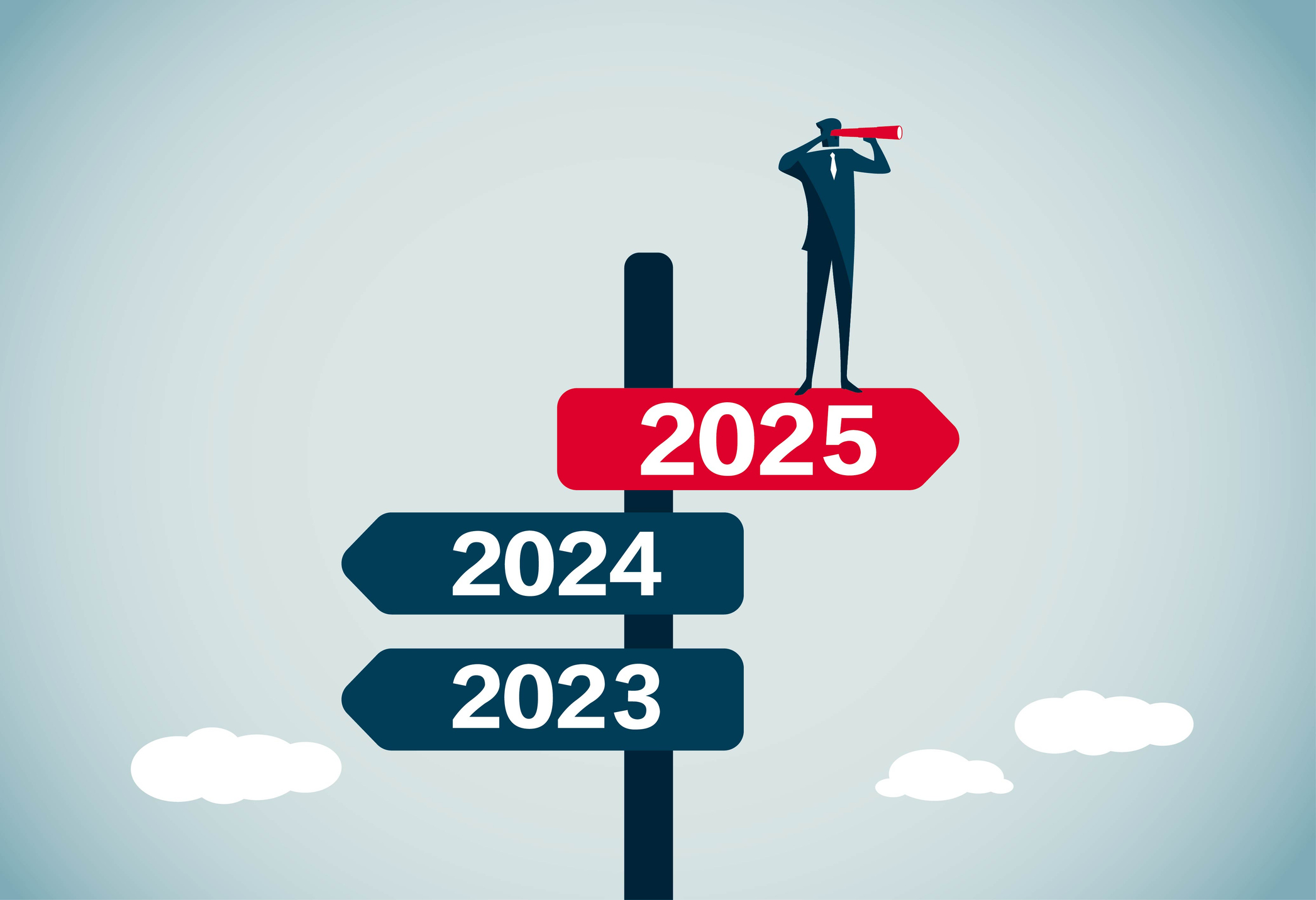Auto Market Recovers Slowly but Deals Still Hard to Find: Kiplinger Economic Forecasts
Car buyers have more options as inventory grows, but interest rates are still high.

Prices in the auto market for new and used cars have risen steadily since the beginning of the pandemic. To help you understand what is going on and what we expect to happen in the future, our highly-experienced Kiplinger Letter team will keep you abreast of the latest developments and forecasts (Get a free issue of The Kiplinger Letter or subscribe). You'll get all the latest news first by subscribing, but we will publish many (but not all) of the forecasts a few days afterward online. Here’s the latest...
After years of shortages and soaring prices, the auto market is getting back to normal — slowly. Inventories of new vehicles for sale are still nowhere near their pre-pandemic average. But availability is improving, giving car shoppers a better selection and a shot at a halfway decent deal.
New car sales will hit 15.5 million this year, up from 13.8 million in 2022 and the most since COVID-19, but still 9% lower than 2019’s 17 million. Demand is robust, even with prices up 20% from before the pandemic for the same model vehicle with comparable features. Despite interest rates rising from about 4.5% on loans to buyers with good credit to 7% or more, and monthly payments for loans on new cars that now average $725, sales are rising. Crimped vehicle production during the pandemic led to lots of elderly cars that need replacing now.

Sign up for Kiplinger’s Free E-Newsletters
Profit and prosper with the best of expert advice on investing, taxes, retirement, personal finance and more - straight to your e-mail.
Profit and prosper with the best of expert advice - straight to your e-mail.
It’s not just consumers who are shopping. Fleet operators are back in the market, too. Sales to rental agencies and other commercial buyers are back to 18% of total sales. Rental agency fleets shrank during the pandemic and need restocking.
If you’re in the market, here are some things to keep in mind, per Ivan Drury, senior manager of insights at Edmunds.com: You’ll have some more leeway to negotiate. But finding deals won’t be easy. Offers like attractive financing, price breaks or favorable trade-ins vary by dealership, more so than usual. So, it pays to shop around, especially when trading in an old car. If you don’t like the offer from the dealer selling you a new car, don’t be afraid to pass and get other quotes. Salespeople expect it now — they’ll still be eager to sell to you.
Be practical about what you need vs. what you want. You’ll get a better price if you stick to models that don’t have every new feature or haven’t been redesigned for a while. Dealers may be more eager to move those cars. It also helps to be open to multiple brands. Some, such as Toyota, Honda, Subaru, Kia and BMW, are still short on inventory relative to the industry average, giving buyers scant room to negotiate.
Breaks on financing are out there. But read the fine print. Offers of low rates often require accepting a three- or four-year loan, which saves you interest but means that you’ll have a higher monthly payment. Sometimes, slightly higher interest rates are available on longer-term loans. But you’ll have to ask. Dealers don’t trumpet them.
The hottest segments now: compact and medium-size trucks. Don’t expect any breaks on pricing there. Ford’s Maverick small pickup is so popular, it’s sold out for the 2023 model year, for instance. Toyota’s Tacoma remains as in demand as ever.
If you’re shopping used, expect prices there to stay elevated, for years. A lack of inventory jacked up prices during the pandemic, and it’ll take time for enough new cars to sell and hit the used market — bad news for bargain hunters.
This forecast first appeared in The Kiplinger Letter, which has been running since 1923 and is a collection of concise weekly forecasts on business and economic trends, as well as what to expect from Washington, to help you understand what’s coming up to make the most of your investments and your money. Subscribe to The Kiplinger Letter.
Read more
Get Kiplinger Today newsletter — free
Profit and prosper with the best of Kiplinger's advice on investing, taxes, retirement, personal finance and much more. Delivered daily. Enter your email in the box and click Sign Me Up.

David is both staff economist and reporter for The Kiplinger Letter, overseeing Kiplinger forecasts for the U.S. and world economies. Previously, he was senior principal economist in the Center for Forecasting and Modeling at IHS/GlobalInsight, and an economist in the Chief Economist's Office of the U.S. Department of Commerce. David has co-written weekly reports on economic conditions since 1992, and has forecasted GDP and its components since 1995, beating the Blue Chip Indicators forecasts two-thirds of the time. David is a Certified Business Economist as recognized by the National Association for Business Economics. He has two master's degrees and is ABD in economics from the University of North Carolina at Chapel Hill.
-
 Stock Market Today: Stocks Gain on Tech, Auto Tariff Talk
Stock Market Today: Stocks Gain on Tech, Auto Tariff TalkThe Trump administration said late Friday that it will temporarily halt tariffs on some Chinese tech imports.
By Karee Venema
-
 Sam's Club Plans Aggressive Expansion: Discover Its New Locations
Sam's Club Plans Aggressive Expansion: Discover Its New LocationsSam's Club expansion plans will open up to 15 new stores each year. Learn where they plan to open in 2025.
By Sean Jackson
-
 What DOGE is Doing Now
What DOGE is Doing NowThe Kiplinger Letter As Musk's DOGE pursues its ambitious agenda, uncertainty and legal challenges are mounting — causing frustration for Trump.
By Matthew Housiaux
-
 A Move Away From Free Trade
A Move Away From Free TradeThe Letter President Trump says long-term gain will be worth short-term pain, but the pain could be significant this year.
By David Payne
-
 Trump’s Whirlwind Month of Crypto Moves
Trump’s Whirlwind Month of Crypto MovesThe Kiplinger Letter The Trump administration wants to strengthen U.S. leadership in the cryptocurrency industry by providing regulatory clarity.
By Rodrigo Sermeño
-
 What To Know if You’re in the Market for a New Car This Year
What To Know if You’re in the Market for a New Car This YearThe Kiplinger Letter Buying a new car will get a little easier, but don’t expect many deals.
By David Payne
-
 What Could Derail the Economy This Year?
What Could Derail the Economy This Year?The Letter While the outlook for the U.S. economy is mostly favorable, there are plenty of risks that bear watching.
By David Payne
-
 Three Ways President Trump Could Impact the Economy
Three Ways President Trump Could Impact the EconomyThe Letter Some of Trump's top priorities could boost economic growth, but others risk fueling inflation.
By David Payne
-
 10 Predictions for 2025 from The Kiplinger Letter
10 Predictions for 2025 from The Kiplinger LetterThe Kiplinger Letter As 2025 arrives, here are our top 10 forecasts for the new year.
By Letter Editors
-
 Europe Faces Economic and Political Headwinds Next Year
Europe Faces Economic and Political Headwinds Next YearThe Letter Challenges for Europe: Potential tariffs, high energy prices and more competition from China will weigh on the bloc in 2025.
By Rodrigo Sermeño
